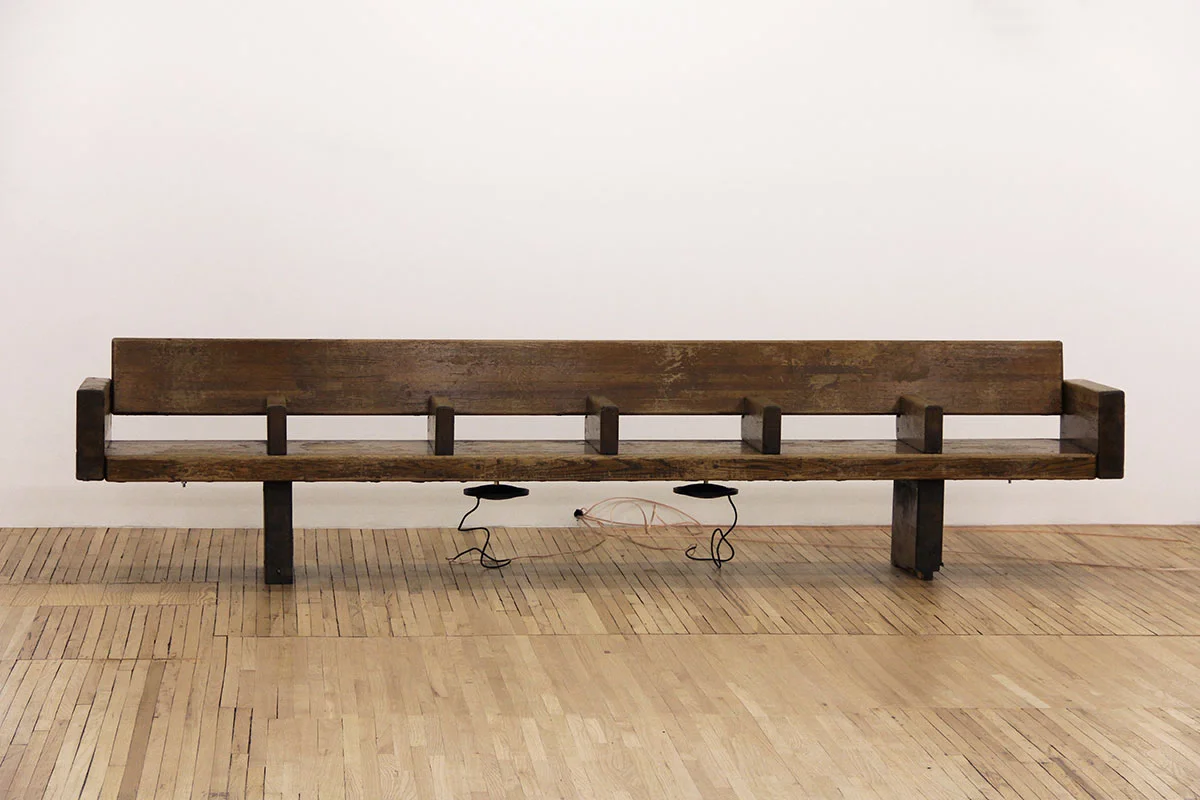
Sergei Tcherepninm. _Motor-Matter Bench._ 2013\. Wood subway bench, transducers, amplifier, HD media player. 28.5 x 20.5 x 126.5 inches. Unique. Image courtesy of Murray Guy and the Museum of modern Art. Photographer: Fabiana Viso.
[](#)[](#)
Sergei Tcherepnin
Der Rattenfänger von Kunst Leads Viewers into the Carioca Aqueduct
It is one thing to compose music or make art; it is another to use people, found objects, and entire rooms as the raw material means of expression. Sergei Tcherepnin has done just this for his latest project, _Ear Tone Box_, prodding his audience to forgo passive consumption for corporeal experience.
For the solo show, Tcherepnin turned New York’s Murray Guy space into an acoustic field of interactive sound and rendered his guests as instruments. They sat on an old wooden subway bench rigged with a subwoofer, ducked their heads into a box emitting chirps near and far, walked by metal sheets that amplified noise upon human presence, and in the process became individual conduits of meaning.
“There were no instructions,” the artist explains, “not because I don’t want to control people, but because I think that a more interesting tension arises when people approach these objects with caution and curiosity.” He perceives his works as “scenarios for listening,” where audiences can either explore the exhibition’s internal logic, or simply watch others “take in the entire sound architecture.”
A video in the exhibition shows Tcherepnin as the Pied Piper, in fishnets and a dress, meandering under an aqueduct in Rio de Janeiro. According to a German medieval legend, the Pied Piper rid an entire village of its rats by luring them to their death with notes from his magical pipe. When the mayor refused to compensate the piper for his services, the musician led the town’s children into the same melodious trap.
The story of the Pied Piper acts as a parable, presenting the potential of music as a means of control. Tcherepnin touches upon the same theme throughout the work; convex mirrors repurposed from subway stations imply crowd control, while benches, designed with slats for sitting but not sleeping, demonstrate limits available to public authority. Like notes from a magical pipe, instruments can provide social good—or lure us towards darkness.
Tcherepnin’s busy summer will continue in New York, where he will show his work along with 15 others in MoMA’s upcoming _Soundings_ exhibition (on view August 10–November 3), a survey of contemporary sound art.
